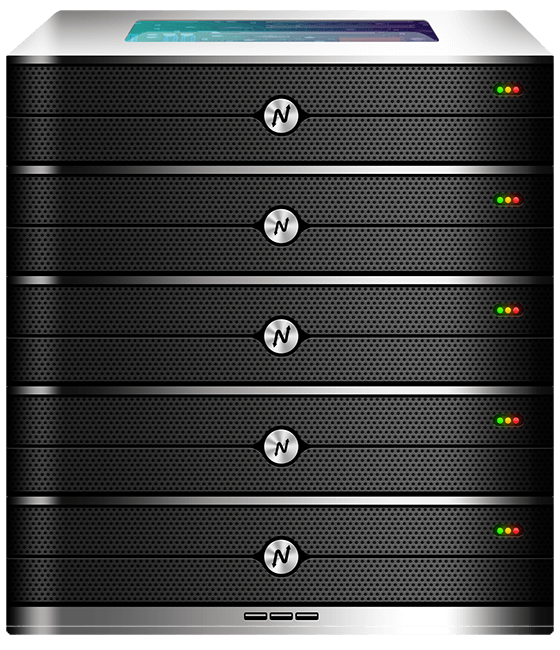If you’ve ever typed a URL and seen a DNS error instead of your site, you know the panic. The question “how do I fix a DNS server problem” matters globally because DNS is the internet’s address book — when it breaks, users can’t find you. This guide walks you through clear, practical DNS server troubleshooting steps, explains why Indian-hosted infrastructure like XenaxCloud is a smart choice, and shows how to prevent repeat issues.
Why Indian servers are a smart choice: cost-effectiveness that keeps your overhead low; low latency across Asia with competitive global speed; security, reliability, and compliance built into modern data centers; and scalable options that let startups and international businesses grow without painful migrations. Together these strengths reduce the chance of DNS-related downtime and make recovery faster when problems arise.
How do I fix a DNS server problem — an overview of the approach
When asking “how do I fix a DNS server problem”, start with systematic diagnostics. DNS issues usually fall into configuration errors, propagation delays, network outages, or caching problems. Begin by isolating whether the issue is local to your device, your ISP, your authoritative DNS, or the hosting provider.
First, check local connectivity: can you ping an IP address (like 8.8.8.8)? If yes, the network works and the issue is DNS-specific. Next, test DNS resolution using tools like nslookup, dig, or web-based DNS checkers. If your domain fails to resolve at authoritative name servers, inspect the DNS records at the registrar and hosting control panel. If resolution works on some networks but not others, caching or propagation is likely. These steps answer the question “how do I fix a DNS server problem” by narrowing the root cause quickly and focusing fixes where they matter most.
Step 1 — Quick local checks
Start answering “how do I fix a DNS server problem” with the simplest checks. On your computer or phone, clear DNS cache: on Windows run ipconfig /flushdns, on macOS run sudo killall -HUP mDNSResponder, and on Android/iOS toggle airplane mode or restart. Then switch to a known public DNS like Google (8.8.8.8) or Cloudflare (1.1.1.1) to rule out ISP DNS issues.
If switching DNS fixes the problem, you’ve diagnosed a resolver issue. If not, try nslookup example.com 1.1.1.1 or dig @8.8.8.8 example.com to see if external resolvers can reach your domain. These local checks are essential first steps in any DNS server troubleshooting plan and answer “how do I fix a DNS server problem” by eliminating common local blockers.
Step 2 — Investigate authoritative DNS and zone records
If local checks don’t resolve the issue, the authoritative name servers or zone records are the usual suspects. Use dig NS yourdomain.com to list authoritative servers. Confirm those name servers are responding and returning the correct A, AAAA, CNAME, and MX records.
Common mistakes to fix now: wrong A record IP, missing glue records for custom name servers, expired domain or suspended registrar status, and incorrect TTLs causing stale data. If you changed DNS recently, remember that propagation can take up to the TTL value. Correcting an incorrect record at your DNS provider often answers the “how do I fix a DNS server problem” question quickly, especially if it was a simple typo or missing record.

Step 3 — Check registrar settings and domain status
A surprising number of DNS problems stem from registrar-level issues. Log into your domain registrar and verify the domain status, name server entries, and auto-renew settings. An expired domain or a pending transfer can cause resolution failures. Also ensure WHOIS contact details are up to date; some registrars suspend domains with invalid contact information.
If you’re using custom name servers, confirm glue records are set correctly at the registrar. Glue records link name server hostnames to IP addresses and are needed when the name server is within the domain it serves. Verifying registrar settings is a direct, practical step in “how do I fix a DNS server problem”.
Step 4 — Inspect DNS propagation and caching behaviour
When records change, DNS propagation can make resolution inconsistent globally. Use multiple public resolvers to test propagation status and check TTL values for problematic records. If you changed critical records like MX or A, temporarily lower TTLs before making the change, so updates propagate faster.
Caching at ISPs or browsers can mask fixes. Explain to end users to flush their device DNS cache or try access through a different network. Use web-based propagation checkers to confirm the distributed state of your DNS. Understanding propagation is essential to answer “how do I fix a DNS server problem” for issues that are already fixed at authoritative servers but still visible somewhere on the internet.
Step 5 — Network and firewall checks (how to fix DNS issues caused by blocks)
Sometimes DNS resolution is blocked by a firewall, security group, or network misconfiguration. Confirm UDP/TCP port 53 is open between recursive resolvers and your authoritative servers. For cloud or VPS setups, ensure security groups and host-based firewalls allow DNS traffic.
If you use a managed DNS provider or an Anycast network, check provider status pages for incidents. For on-prem name servers, check system logs for dropped queries or resource exhaustion. These network-level checks are often the final mile in “how do I fix a DNS server problem” when records and registrar settings are correct but queries are failing to reach the server.
Tools and commands for DNS server troubleshooting
List practical commands and what they reveal. Use ping to test basic connectivity, traceroute or tracert to trace network paths, nslookup for quick resolution checks, and dig for detailed DNS queries and TXT record inspections. whois shows registrar status and expiry.
Online tools like DNS checkers, DNS propagation monitors, and DNS performance dashboards help when local tools are unavailable. Keeping a standard toolkit saves time when answering “how do I fix a DNS server problem” under pressure. Save common commands and expected responses in team runbooks for faster recovery.
Comparison — Indian servers vs US, Canada, Germany, UAE for DNS reliability
When hosting DNS or your origin infrastructure, region matters. Below is a neutral HTML comparison showing how Indian servers perform compared to other regions on latency, best use, privacy, and support. This helps you decide where to host DNS and website services to reduce DNS-related incidents.
| Region | Typical DNS Latency (ms) | Best Use | Privacy & Compliance | Support & Provisioning |
|---|---|---|---|---|
| India | 10–80 | APAC audiences, low-cost high-density hosting | Good regional compliance; improving standards | 24/7 support, fast provisioning |
| US | 20–150 | North American audiences, global CDN hubs | Mature frameworks, varies by state | 24/7 enterprise support common |
| Canada | 30–140 | Privacy-sensitive NA/EU traffic | High privacy standards | 24/7 support common |
| Germany | 40–120 | European compliance and GDPR-centric services | Very strict data protection | Business-hours plus extended support |
| UAE | 50–170 | Middle East traffic and regional regulatory needs | Regional rules apply | Growing 24/7 availability |
Indian servers paired with Anycast DNS or global CDNs provide excellent resilience for DNS queries, especially for users in Asia. This reduces the frequency of the question “how do I fix a DNS server problem” by lowering network-related failure rates.
Ecommerce site with intermittent downtime: Often caused by expired DNS records, low TTLs and sudden propagation, or misconfigured load balancers. Fix by renewing the domain, confirming A records, and using health checks with your DNS provider.
Real-world use cases — common DNS problems and fixes
Email delivery failures: Typically tied to missing or incorrect SPF, DKIM, or DMARC records. Add or correct TXT records and test with mail-auth tools to restore trust and deliverability.
Custom name servers failing: Usually due to missing glue records or firewall blocks. Add glue at the registrar and ensure DNS server IPs are reachable on port 53.
Development and staging issues: Wildcard CNAMEs or incorrect hosts files can mask DNS problems. Use isolated testing environments and document DNS templates to avoid human error.
Each scenario shows practical steps to answer “how do I fix a DNS server problem” based on the symptom.
Long-term best practices to prevent DNS problems
Prevention reduces emergency troubleshooting. Keep these practices to minimize future DNS incidents: use reputable DNS providers with monitoring and rate limits, configure low-risk TTL strategies for planned changes, automate DNS backups, and implement DNSSEC where appropriate to protect integrity.
Document DNS record ownership and change approval workflows to prevent accidental deletions. For sites with global audiences, use Anycast DNS or multi-region authoritative servers to lower geographic failure impact. Finally, maintain clear contact and auto-renew settings at registrars to avoid accidental expirations that trigger the common question “how do I fix a DNS server problem”.
When to escalate to your hosting or DNS provider
If you’ve run through local checks, verified authoritative records, and still face intermittent or global resolution failures, escalate to your hosting or DNS provider. Provide them with dig/nslookup outputs, traceroutes, timestamps, and affected networks. With XenaxCloud, support teams can check routing, BGP announcements, firewall logs, and server health to find issues beyond your control.
Escalation helps when the problem is at the provider level, such as an Anycast routing incident, DDoS mitigation causing drops, or a backend authoritative server outage. Knowing when and how to escalate is part of any solid “how do I fix a DNS server problem” workflow.
Recommended plans and tools from XenaxCloud for DNS resilience
For most users who ask “how do I fix a DNS server problem”, the right hosting tier reduces risk and speeds recovery. For small sites, Silver — 1 Website, 15GB Storage, 100GB Bandwidth, $1.79 is a stable start. Developers and growing apps should consider KVM VPS 2 — 4 Vcore CPU, 16GB RAM, 50GB Storage, 4TB Bandwidth, $10.79 for more control over BIND or PowerDNS setups. For performance-sensitive projects, Speed KVM VPS 3 — 8 Vcore CPU, 16GB RAM, 70GB Storage, 4TB Bandwidth, $14.39 offers extra headroom.
FAQ —
How do I fix a DNS server problem on my PC?
Flush your DNS cache, test with public resolvers like 8.8.8.8, and use nslookup or dig to verify resolution.
What is DNS server troubleshooting?
DNS server troubleshooting is the process of diagnosing resolution failures by checking local caches, authoritative records, registrar settings, and network path issues.
Can Indian hosted DNS handle global traffic?
Yes, Indian servers with good peering and Anycast DNS or CDN integration can reliably serve global traffic.
How to fix DNS issues after changing records?
Lower TTL before changes, wait for propagation, and clear caches; verify records with dig across multiple public resolvers.
When should I use DNSSEC?
Use DNSSEC when you need to prevent DNS spoofing and ensure integrity for security-sensitive domains.
Conclusion
Answering “how do I fix a DNS server problem” starts with calm, methodical diagnosis: rule out local issues, test with public resolvers, inspect authoritative records, confirm registrar settings, and check network paths. Hosting with a provider like XenaxCloud reduces the odds of DNS failures through reliable Indian infrastructure, continuous monitoring, fast provisioning, and expert support.
If you want a low-friction setup, start with Silver — 1 Website, 15GB Storage, 100GB Bandwidth, $1.79 and upgrade to KVM VPS 2 — 4 Vcore CPU, 16GB RAM, 50GB Storage, 4TB Bandwidth, $10.79 or Speed KVM VPS options for greater control. Keep domains and DNS managed together at XenaxCloud’s Domains page to simplify recovery and minimize the steps when you ask “how do I fix a DNS server problem”. All plans include a 15-day money-back guarantee, and the latest deals are on the XenaxCloud Offers Page: https://xenaxcloud.com/offers.
Ready to stop DNS nightmares and get resilient DNS hosting? Visit XenaxCloud Domains and Hosting to secure your setup and reduce downtime risk: https://xenaxcloud.com/domain/.





